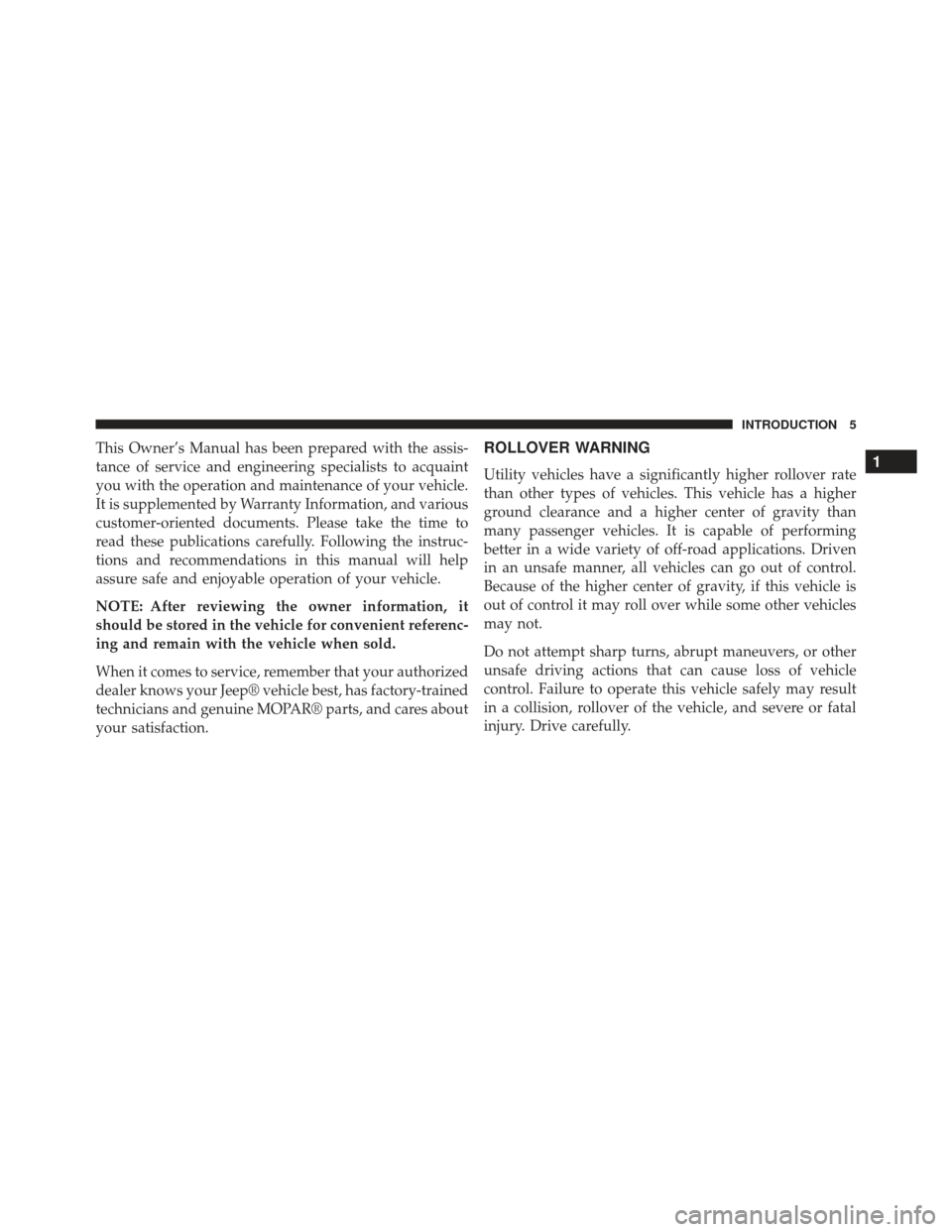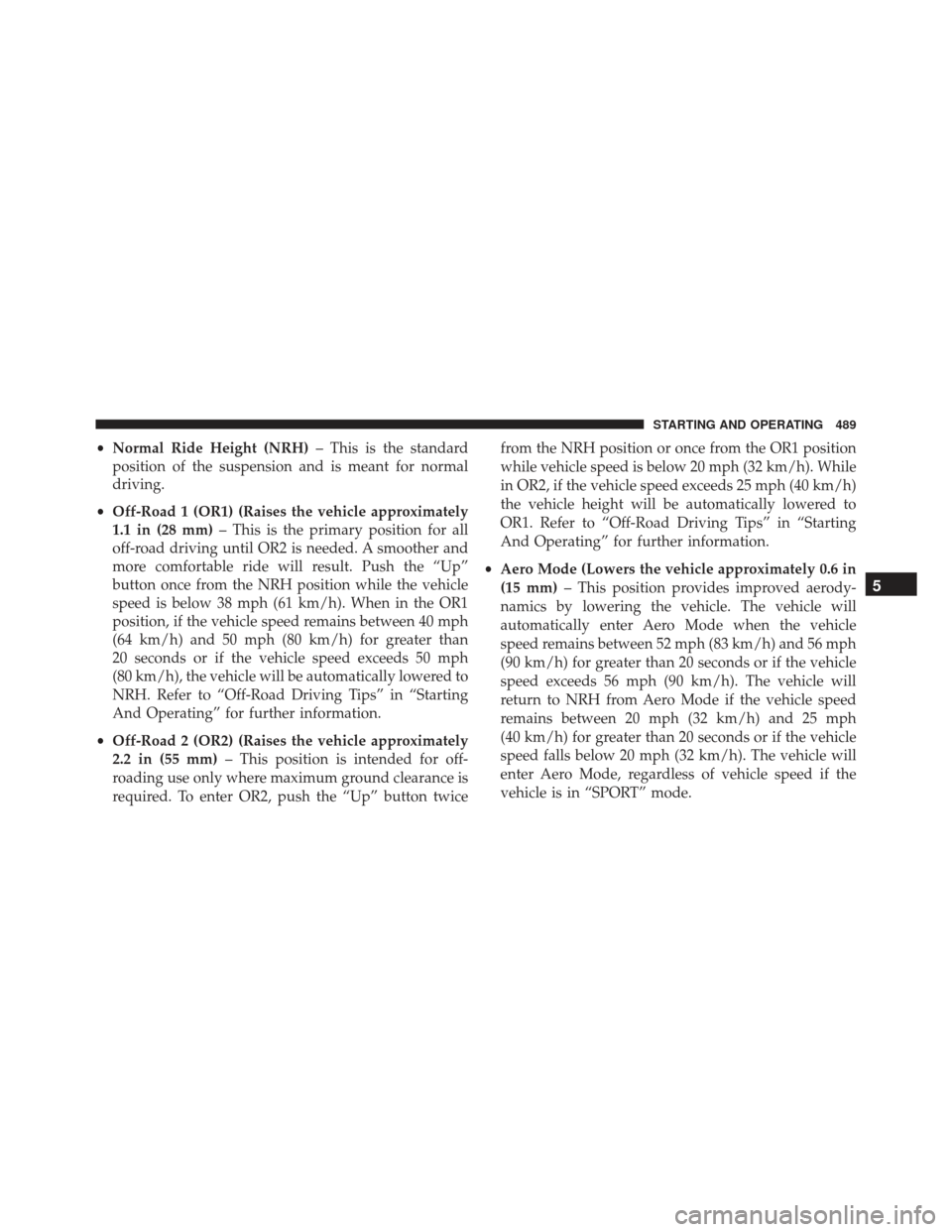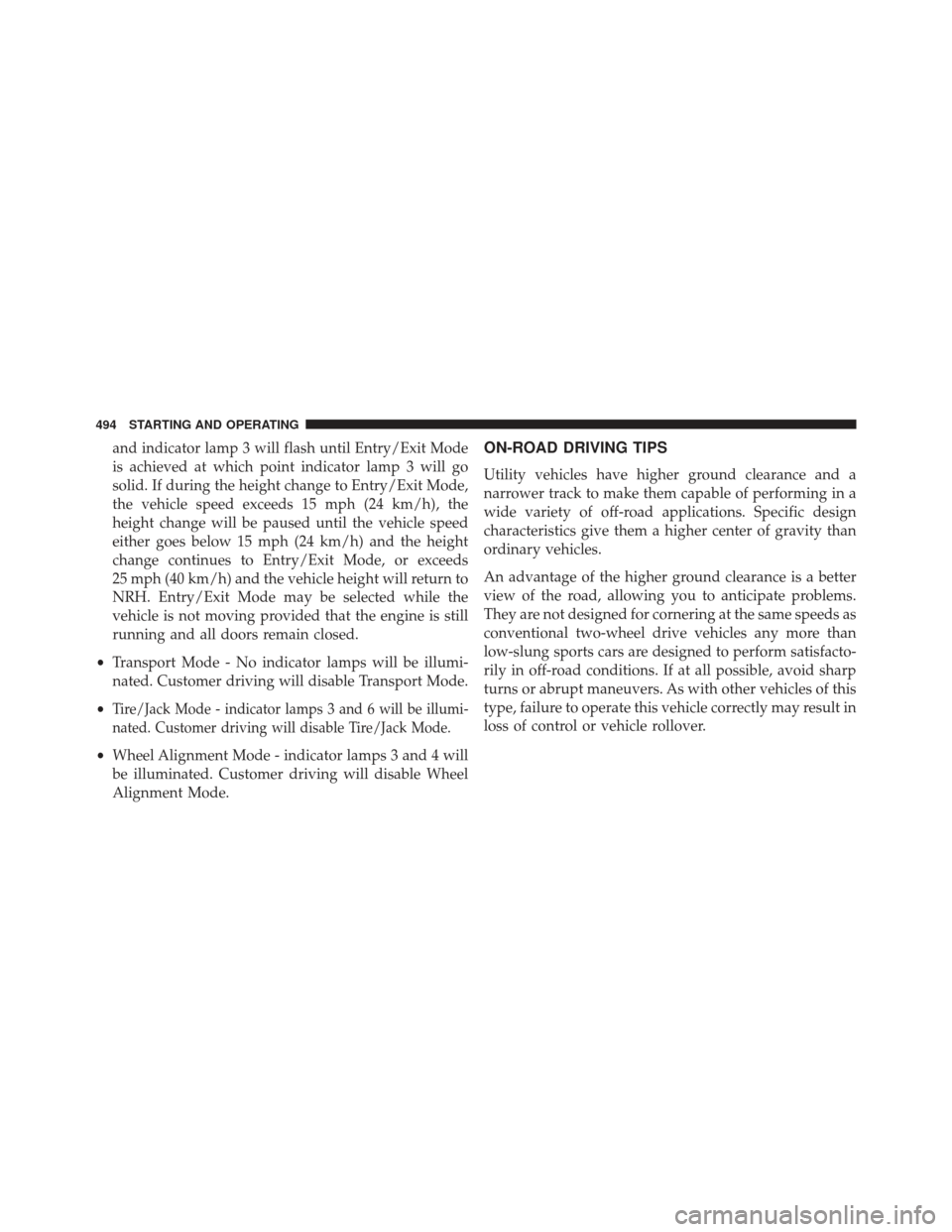2016 JEEP GRAND CHEROKEE ground clearance
[x] Cancel search: ground clearancePage 7 of 745

This Owner’s Manual has been prepared with the assis-
tance of service and engineering specialists to acquaint
you with the operation and maintenance of your vehicle.
It is supplemented by Warranty Information, and various
customer-oriented documents. Please take the time to
read these publications carefully. Following the instruc-
tions and recommendations in this manual will help
assure safe and enjoyable operation of your vehicle.
NOTE: After reviewing the owner information, it
should be stored in the vehicle for convenient referenc-
ing and remain with the vehicle when sold.
When it comes to service, remember that your authorized
dealer knows your Jeep® vehicle best, has factory-trained
technicians and genuine MOPAR® parts, and cares about
your satisfaction.ROLLOVER WARNING
Utility vehicles have a significantly higher rollover rate
than other types of vehicles. This vehicle has a higher
ground clearance and a higher center of gravity than
many passenger vehicles. It is capable of performing
better in a wide variety of off-road applications. Driven
in an unsafe manner, all vehicles can go out of control.
Because of the higher center of gravity, if this vehicle is
out of control it may roll over while some other vehicles
may not.
Do not attempt sharp turns, abrupt maneuvers, or other
unsafe driving actions that can cause loss of vehicle
control. Failure to operate this vehicle safely may result
in a collision, rollover of the vehicle, and severe or fatal
injury. Drive carefully.1
INTRODUCTION 5
Page 489 of 745

Selec-Terrain consists of the following positions:
•Snow –
Tuning set for additional stability in inclement
weather. Use on and off road on loose traction surfaces
such as snow. When in Snow mode (depending on
certain operating conditions), the transmission may use
second gear (rather than first gear) during launches, to
minimize wheel slippage. If equipped with air suspen-
sion, the default ride height for Snow is NRH.
• Auto – Fully automatic full time four-wheel drive
operation can be used on and off road. Balances
traction with seamless steering feel to provide im-
proved handling and acceleration over two-wheel
drive vehicles. If equipped with air suspension, the
level will change to NRH.
• Sand – Off road calibration for use on low traction
surfaces such as sand or wet grass. Driveline is maxi-
mized for traction. Some binding may be felt on less
forgiving surfaces. The electronic brake controls are set to limit traction control management of throttle and
wheel spin. If equipped with air suspension, the
default ride height for Sand is NRH.
• Mud – Off road calibration for use on low traction
surfaces such as mud. Driveline is maximized for
traction. Some binding may be felt on less forgiving
surfaces. The electronic brake controls are set to limit
traction control management of throttle and wheel
spin. If equipped with air suspension, the level will
change to Off Road 1.
• Rock – Off road calibration only available in 4WD Low
range. The vehicle is raised (if equipped with Air
Suspension) for improved ground clearance. Traction
based tuning with improved steer-ability for use on
high traction off-road surfaces. Use for low speed
obstacles such as large rocks, deep ruts, etc. If
equipped with air suspension, the vehicle level will
change to Off-Road 2. If the Selec-Terrain switch is in
5
STARTING AND OPERATING 487
Page 491 of 745

•Normal Ride Height (NRH) – This is the standard
position of the suspension and is meant for normal
driving.
• Off-Road 1 (OR1) (Raises the vehicle approximately
1.1 in (28 mm) – This is the primary position for all
off-road driving until OR2 is needed. A smoother and
more comfortable ride will result. Push the “Up”
button once from the NRH position while the vehicle
speed is below 38 mph (61 km/h). When in the OR1
position, if the vehicle speed remains between 40 mph
(64 km/h) and 50 mph (80 km/h) for greater than
20 seconds or if the vehicle speed exceeds 50 mph
(80 km/h), the vehicle will be automatically lowered to
NRH. Refer to “Off-Road Driving Tips” in “Starting
And Operating” for further information.
• Off-Road 2 (OR2) (Raises the vehicle approximately
2.2 in (55 mm) – This position is intended for off-
roading use only where maximum ground clearance is
required. To enter OR2, push the “Up” button twice from the NRH position or once from the OR1 position
while vehicle speed is below 20 mph (32 km/h). While
in OR2, if the vehicle speed exceeds 25 mph (40 km/h)
the vehicle height will be automatically lowered to
OR1. Refer to “Off-Road Driving Tips” in “Starting
And Operating” for further information.
• Aero Mode (Lowers the vehicle approximately 0.6 in
(15 mm) – This position provides improved aerody-
namics by lowering the vehicle. The vehicle will
automatically enter Aero Mode when the vehicle
speed remains between 52 mph (83 km/h) and 56 mph
(90 km/h) for greater than 20 seconds or if the vehicle
speed exceeds 56 mph (90 km/h). The vehicle will
return to NRH from Aero Mode if the vehicle speed
remains between 20 mph (32 km/h) and 25 mph
(40 km/h) for greater than 20 seconds or if the vehicle
speed falls below 20 mph (32 km/h). The vehicle will
enter Aero Mode, regardless of vehicle speed if the
vehicle is in “SPORT” mode.
5
STARTING AND OPERATING 489
Page 496 of 745

and indicator lamp 3 will flash until Entry/Exit Mode
is achieved at which point indicator lamp 3 will go
solid. If during the height change to Entry/Exit Mode,
the vehicle speed exceeds 15 mph (24 km/h), the
height change will be paused until the vehicle speed
either goes below 15 mph (24 km/h) and the height
change continues to Entry/Exit Mode, or exceeds
25 mph (40 km/h) and the vehicle height will return to
NRH. Entry/Exit Mode may be selected while the
vehicle is not moving provided that the engine is still
running and all doors remain closed.
• Transport Mode - No indicator lamps will be illumi-
nated. Customer driving will disable Transport Mode.
•
Tire/Jack Mode - indicator lamps 3 and 6 will be illumi-
nated. Customer driving will disable Tire/Jack Mode.
• Wheel Alignment Mode - indicator lamps 3 and 4 will
be illuminated. Customer driving will disable Wheel
Alignment Mode.
ON-ROAD DRIVING TIPS
Utility vehicles have higher ground clearance and a
narrower track to make them capable of performing in a
wide variety of off-road applications. Specific design
characteristics give them a higher center of gravity than
ordinary vehicles.
An advantage of the higher ground clearance is a better
view of the road, allowing you to anticipate problems.
They are not designed for cornering at the same speeds as
conventional two-wheel drive vehicles any more than
low-slung sports cars are designed to perform satisfacto-
rily in off-road conditions. If at all possible, avoid sharp
turns or abrupt maneuvers. As with other vehicles of this
type, failure to operate this vehicle correctly may result in
loss of control or vehicle rollover.
494 STARTING AND OPERATING
Page 549 of 745

Run Flat Tires — If Equipped
Run Flat tires allow you the capability to drive 50 miles
(80 km) at 50 mph (80 km/h) after a rapid loss of inflation
pressure. This rapid loss of inflation is referred to as the
Run Flat mode. A Run Flat mode occurs when the tire
inflation pressure is of/or below 14 psi (96 kPa). Once a
Run Flat tire reaches the run flat mode it has limited
driving capabilities and needs to be replaced immedi-
ately. A Run Flat tire is not repairable.
It is not recommended driving a vehicle loaded at full
capacity or to tow a trailer while a tire is in the run flat
mode.
See the tire pressure monitoring section for more infor-
mation.
Spare Tires — If Equipped
NOTE:For vehicles equipped with Tire Service Kit
instead of a spare tire, please refer to “Tire Service Kit” in
“What To Do In Emergencies” for further information.
CAUTION!
Because of the reduced ground clearance, do not take
your vehicle through an automatic car wash with a
compact or limited-use temporary spare installed.
Damage to the vehicle may result.
Spare Tire Matching Original Equipped Tire And
Wheel — If Equipped
Your vehicle may be equipped with a spare tire and
wheel equivalent in look and function to the original
equipment tire and wheel found on the front or rear axle
of your vehicle. This spare tire may be used in the tire
5
STARTING AND OPERATING 547